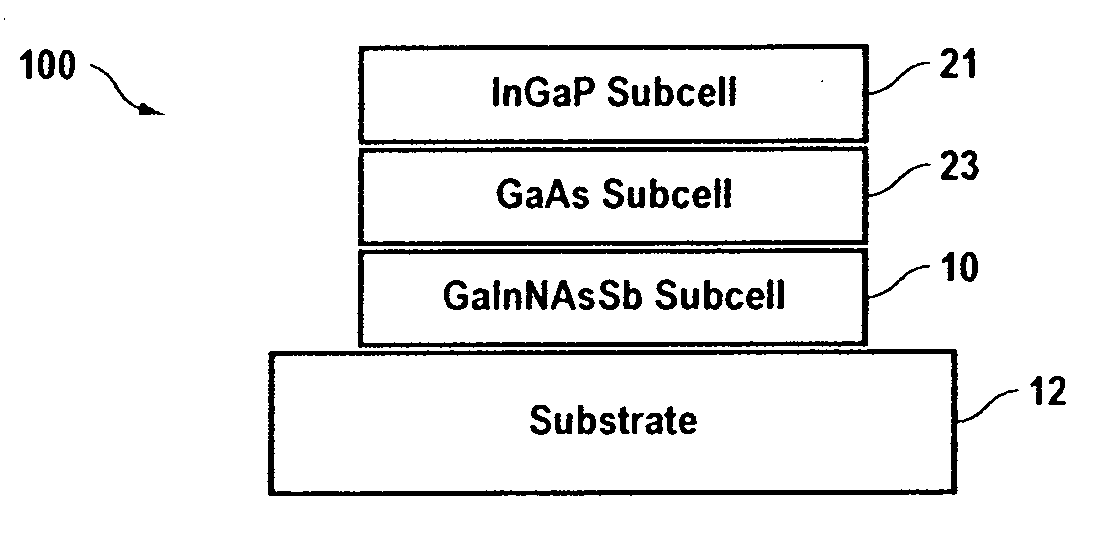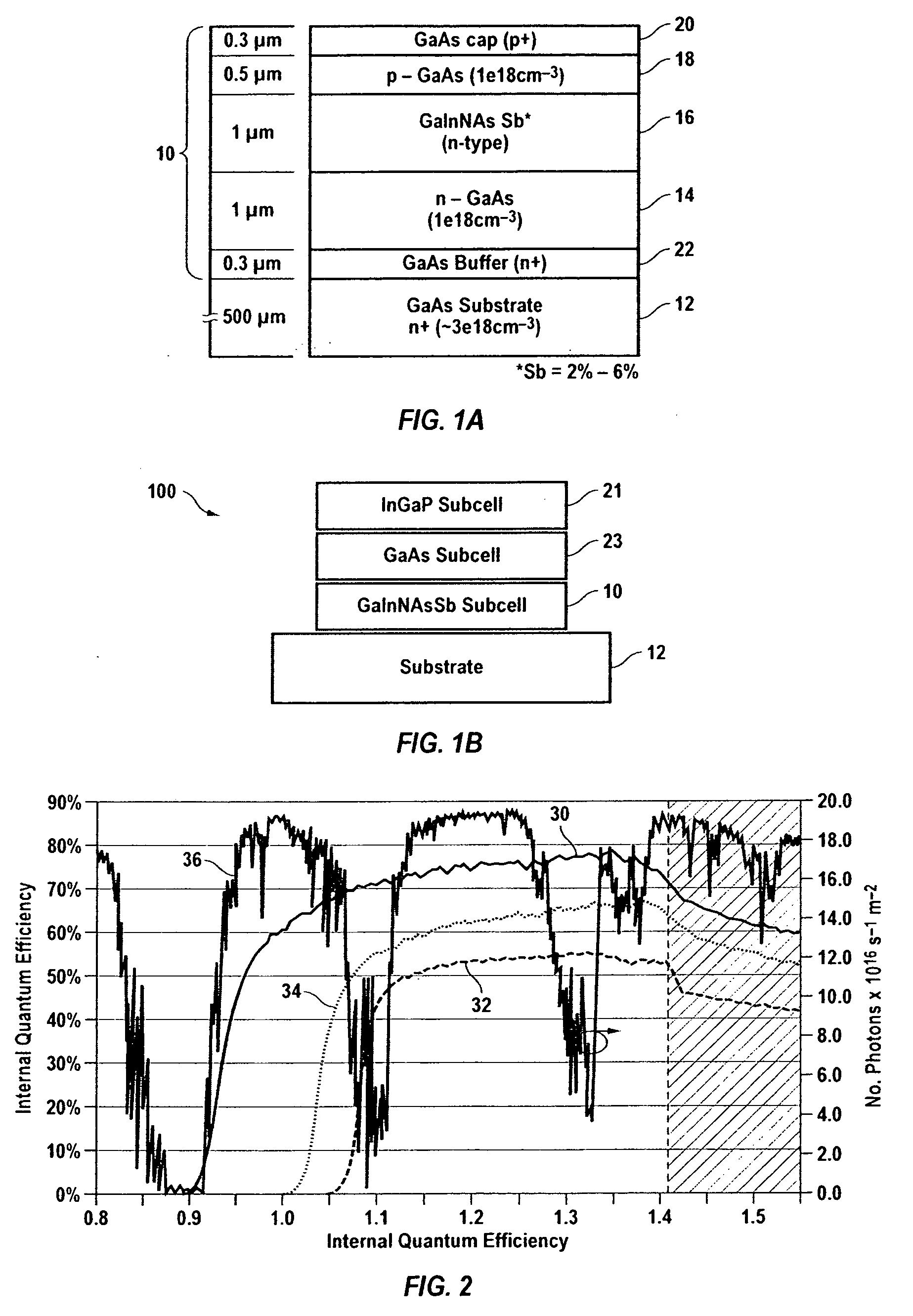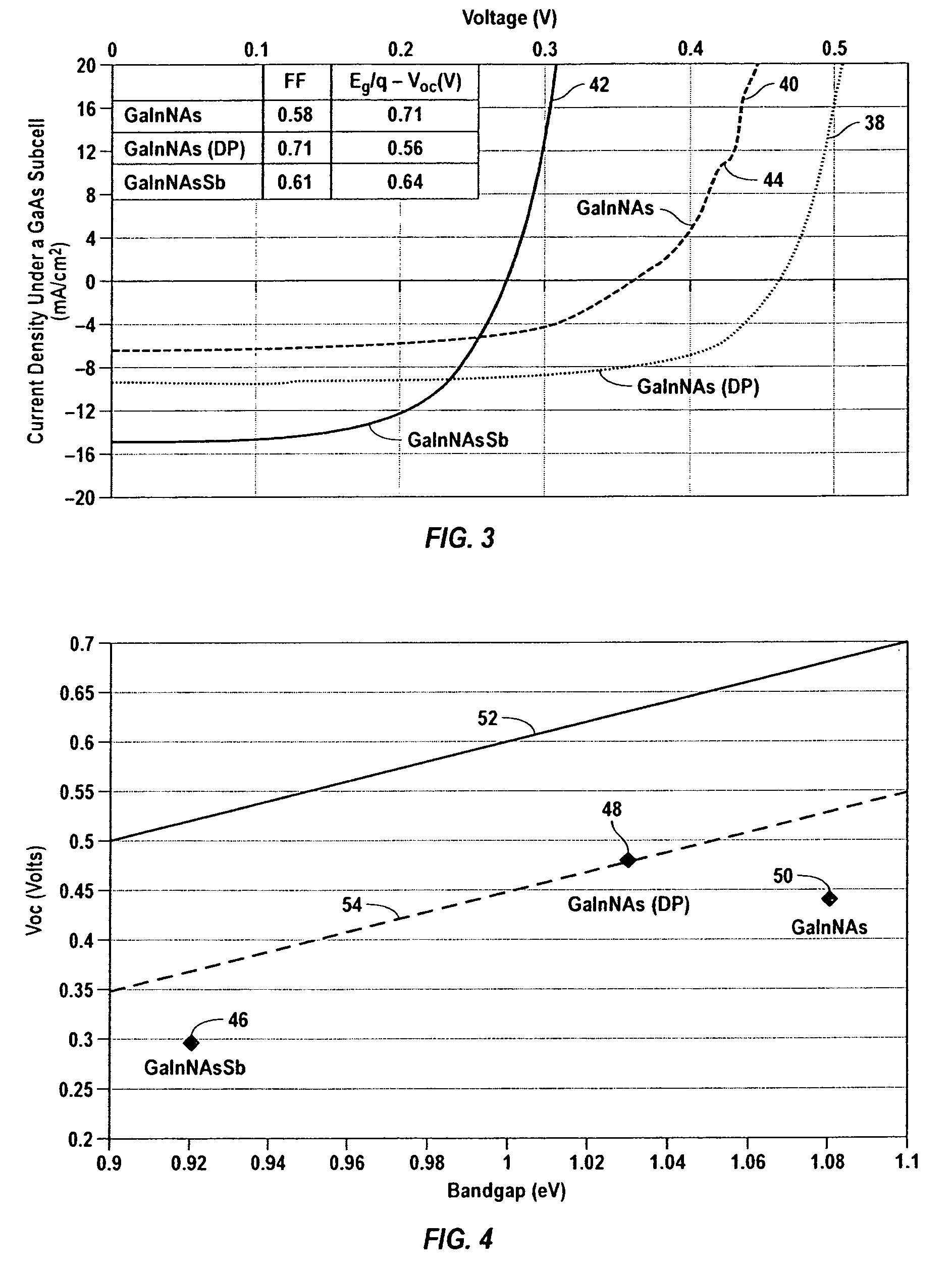GaInNAsSb solar cells grown by molecular beam epitaxy
a solar cell and molecular beam technology, applied in the field of solar cell technology, can solve the problems of poor performance, difficult manufacturing of lattice-matched structures, and poor efficiency of most dilute nitride solar cells, and achieve the effects of promoting efficient solar energy conversion, high efficiency, and favorable characteristics of solar cells
- Summary
- Abstract
- Description
- Claims
- Application Information
AI Technical Summary
Benefits of technology
Problems solved by technology
Method used
Image
Examples
Embodiment Construction
[0025]Two techniques have been explored that have been aimed at improving the quality of thicker narrow band gap, nearly lattice-matched III-V type dilute nitride films in solar cells grown by molecular beam epitaxy (MBE), namely the utilization of biased deflection plates installed in front of the nitrogen plasma source, and the introduction of antimony to the growth process. The experimental results indicate that antimony-containing nitride films above certain concentrations actually improved performance of solar cells, in contrast to prior art teachings that the presence of antimony was deleterious to the achievement of desired characteristics useful in a solar cell.
[0026]According to the invention and in reference to FIGS. 1A and 1B, a material system 10, herein a layer, which contains a dilute nitride film (FIG. 1A), that specifically contains antimony in the nitride film, namely, GaInNAsSb 16 with approximately 2% to 6% antimony (“Sb”), can be grown on a substrate 12 that is s...
PUM
 Login to View More
Login to View More Abstract
Description
Claims
Application Information
 Login to View More
Login to View More - R&D
- Intellectual Property
- Life Sciences
- Materials
- Tech Scout
- Unparalleled Data Quality
- Higher Quality Content
- 60% Fewer Hallucinations
Browse by: Latest US Patents, China's latest patents, Technical Efficacy Thesaurus, Application Domain, Technology Topic, Popular Technical Reports.
© 2025 PatSnap. All rights reserved.Legal|Privacy policy|Modern Slavery Act Transparency Statement|Sitemap|About US| Contact US: help@patsnap.com



